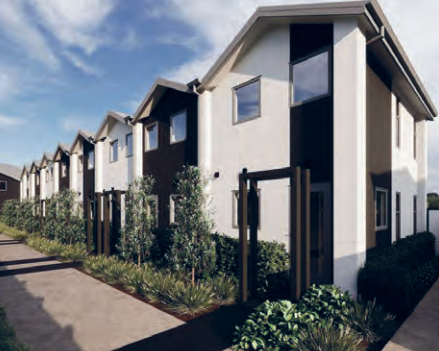
The plea also extends to outgoing Mayor Lianne Dalziel who, like the majority of current city councillors, has expressed serious reservations about the impact of a centralised and bi-partisan solution to the nationwide housing crisis.
Although The Resource Management Amendment Act 2021 is now law, 15 residents’ associations want city councillors to at least display a gesture of solidarity when housing intensification legislation features on the agenda for September 8.

City councillors will decide whether to effectively rubber stamp part of the bill, knowing resistance will essentially be futile.
The legislation includes Government-directed medium density residential standards which will apply across the city and allow the construction of three townhouses of up to three storeys each on almost all residential sites.
Other parts of the city can be subject to even higher density intensification.The residents’ associations were also concerned the legislation allows six-storey residential buildings in precincts designated on city council maps as Merivale, Sydenham North, Bush Inn, Belfast North, Linwood Eastgate, North Halswell, Riccarton, Hornby, Northlands, Bishopdale, Prestons and Barrington.
Tony Simons, chair of the Riccarton Bush-Kilmarnock Residents’ Association, challenged city councillors to at least delay the process by not voting to “give the law effect” next month.
“Other councils around the country have basically rubber stamped this and said: ‘There’s nothing we can do about it, the Government has passed a law, we just need to do what we’re told’. Sorry guys.
“What we’re saying to councillors is you can vote No,” Simons said, acknowledging the Government can still override that decision.
“It’s possible the Government might bring in a statutory manager to manage the process on the council’s behalf.
“Politically that wouldn’t necessarily be a bad thing. If councillors vote according to their conscience and the upshot is the Government intervenes then so be it,” Simons said.
City councillors and Dalziel were to be emailed a message from the residents’ associations tonight, and Simons was hopeful they would comply with the bid to disrupt the process.
“It’s a point of principle. You can argue it’s symbolic, you can argue it’s toothless and it’s not going to stop the inevitable,” he said.
“My argument is that’s not the point. You stand up to people who try to bully you into submission.
“If you’re all against it, why would you vote to be complicit in enabling it? September 8 is the last chance for the council to at least delay the process.”
Dalziel was unavailable for comment yesterday but has previously described the bill as “a blunt one-size-fits-all approach”.
City councillors will also consider a plan change which outlines what the council proposes regarding intensification in and around commercial centres, as well as areas where development will be restricted because of “qualifying matters” such as heritage and character considerations.
“We might be able to tinker around the edges,” said Waimairi Ward representative Sam MacDonald, before the residents’ association delivered their appeal.

“It’s literally one-size-fits-all, which is not helpful when you have a district plan already.
“I could live with two-storey. Three stories is huge in the suburbs and you have no ability to really challenge it.
“We’re not getting a say on whether we accept housing density or not, we’re getting a say on what kind of stuff we can include to mitigate some of the fallout from what the government has imposed.
“We can kick and scream all we like, we’ve got to hope at some stage either the government or opposition go ‘this isn’t good’ and back away from it.”
“What would have been better is for the rules to apply, for example, within the Four Avenues, which would help lift our population in the CBD.
“All you’ll see is more intensification in areas where it’s not warranted. There’s nothing to stop monstrosities going up right next door where you’ve got no say. I genuinely think it’s going to wreck suburbs.
“I’ve been supportive of the National Party and even they agreed to this. This cross-party thing between Labour and National to fix the housing crisis . . . if you go back to Economics 101 the interest rates are correcting a lot of that as we speak.”
Housing minister Megan Woods, the MP for Wigram, defended the Government’s remedy to the housing crisis, one endorsed by the National Party.
“We know historically that as a country we had not been building enough homes in the right places to meet the needs of New Zealanders,” she said.
“This makes our housing unaffordable. This Government has come up with a plan that includes taking aim at overly restrictive council planning rules which are sometimes confusing and arbitrary, and limit the numbers and types of houses we can build.
“These measures support increased urban density which will enable more houses to be built in high demand, highly accessible areas.
“The joint approach of this initiative, and why we brought the National Party into our plan on this was to provide greater certainty for developers that the rules would not be removed or reduced at a later stage.”














